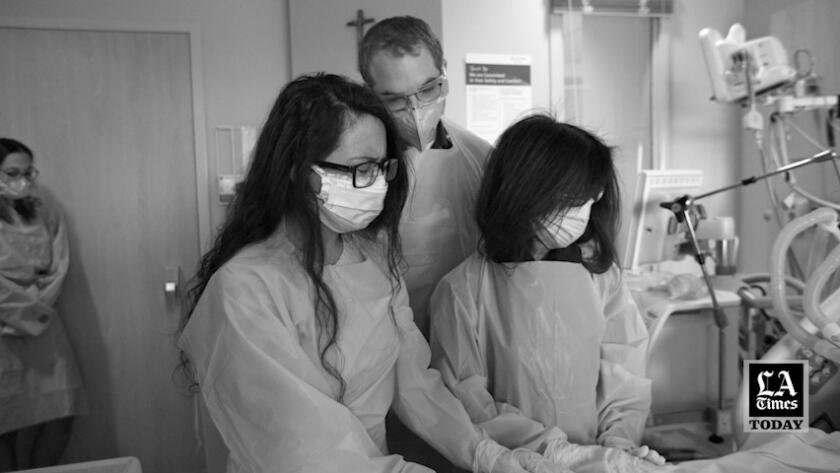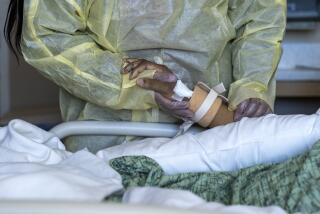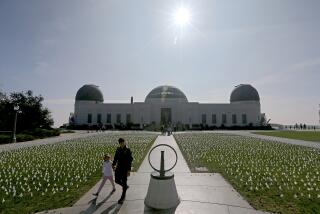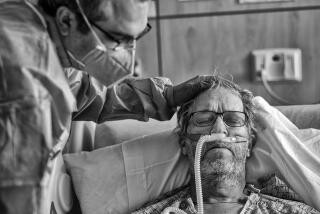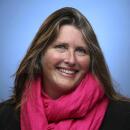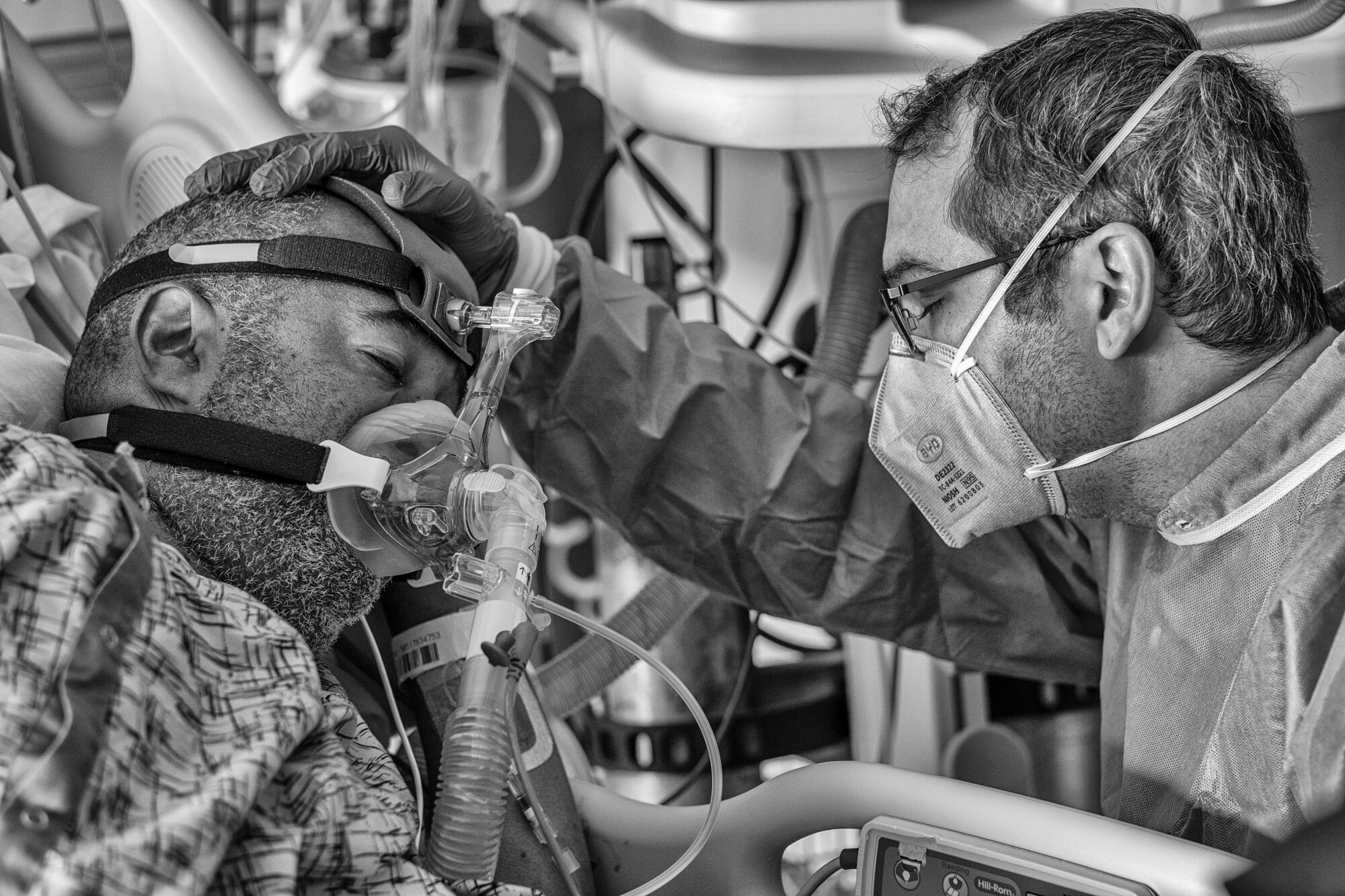
- Share via
Like any hospital, Providence Holy Cross Medical Center is filled with operating rooms, examining rooms, nurses’ stations and labs. But to Kevin Deegan, the hospital’s senior chaplain, it also contains sacred places — places where profound, heartbreaking and loving things occurred as the pandemic took hold.
We are close to reaching a once incomprehensible milestone: 1 million American lives lost to COVID-19. How to comprehend such loss? One way, says Chaplain Kevin (as everyone calls him), is to visit those sacred places.
As a photojournalist, I’ve been documenting the pandemic inside Providence Holy Cross and 13 other Southern California hospitals. I had photographed Chaplain Kevin as he comforted doctors and nurses, as well as patients in their last moments. He is among thousands of hospital chaplains across the country who have done such work.
He agreed to spend time with me to reflect on what we had heard and seen. He asked that I return to the hospital on Easter Sunday, a time of rebirth.
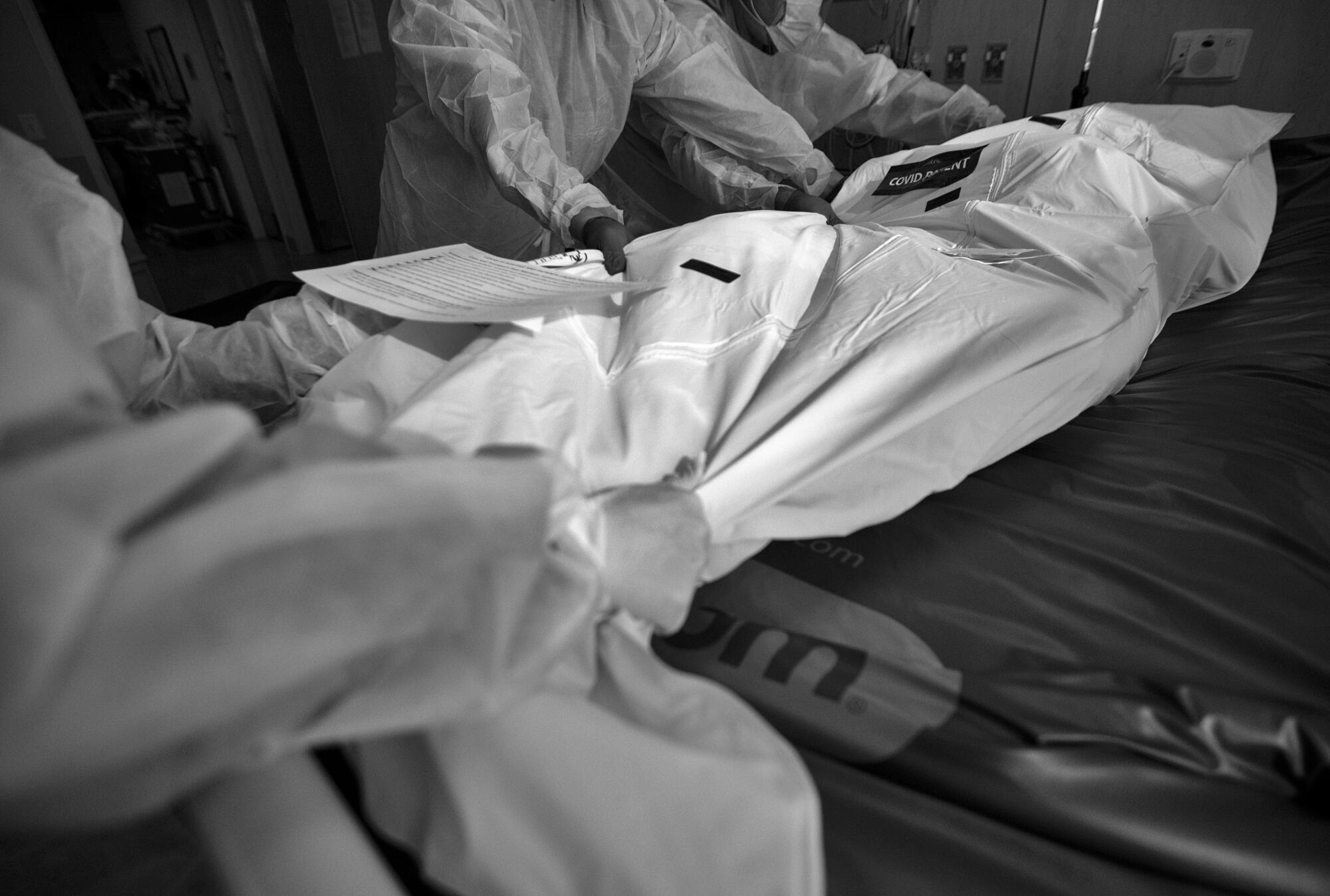
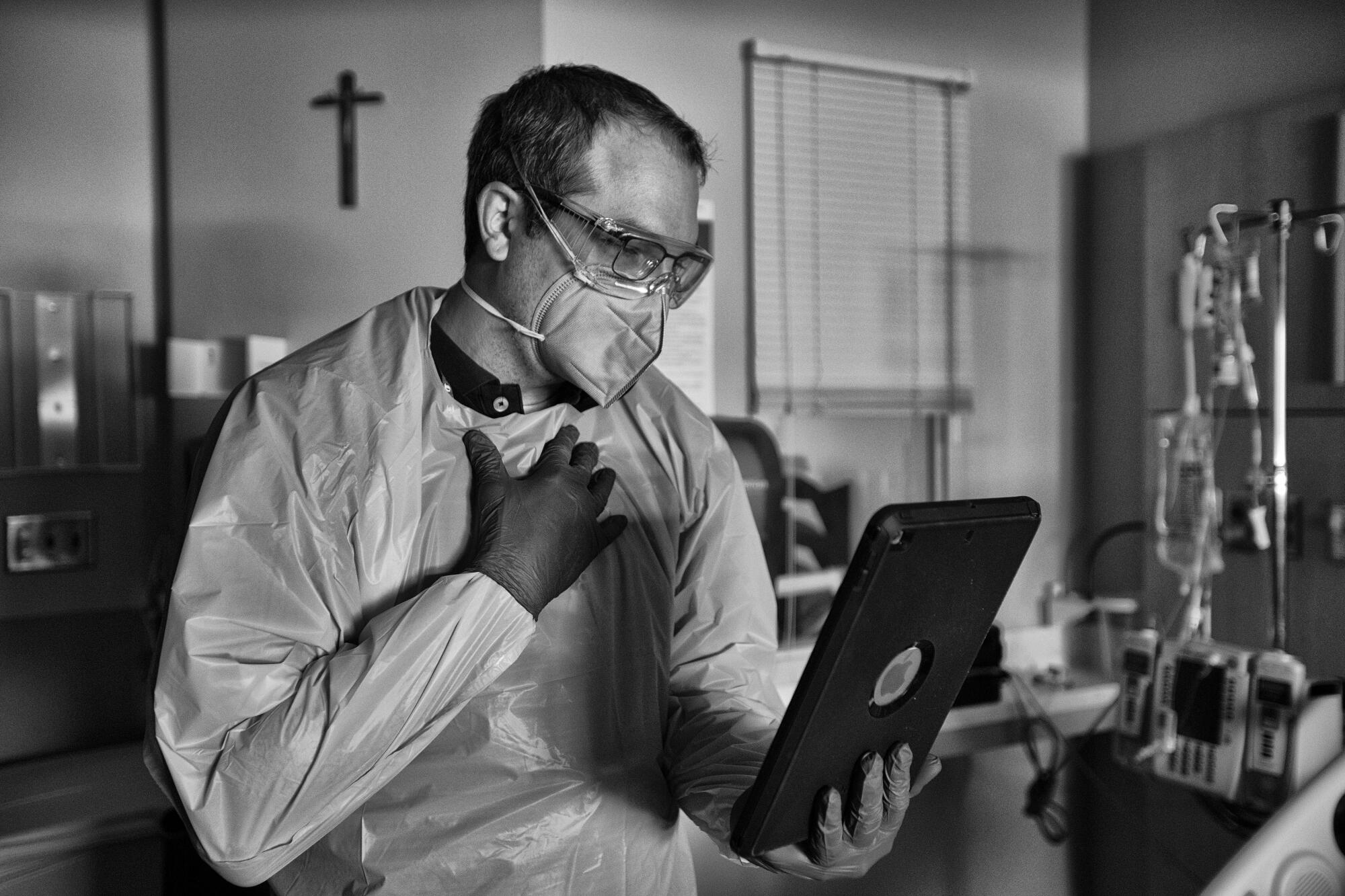
We meet outside the hospital chapel, where he suggests a walking tour of the units where I had seen him and the medical staff hard at work. After all, the work of a hospital chaplain is not done in an empty chapel.
Wearing a mask and carrying an iPad, the 36-year-old chaplain propels a door wide open and easily sprints up two flights of stairs, leaving me to catch my breath. For Chaplain Kevin, the stairwell meant more than just a place to sneak in some exercise. He stops just shy of the door to the third floor.
“The stairwell is the only place that wasn’t affected by COVID,” he says. “It’s the space in the hospital that you can forget — intentionally forget what has been happening. And for that small moment, coming up the stairs — the ability to forget and not have to think about COVID — can be a sacred space.”
He looks out the large windows to a beautiful morning, crisp and clear. He pushes on the silver door handle and gently opens the door.
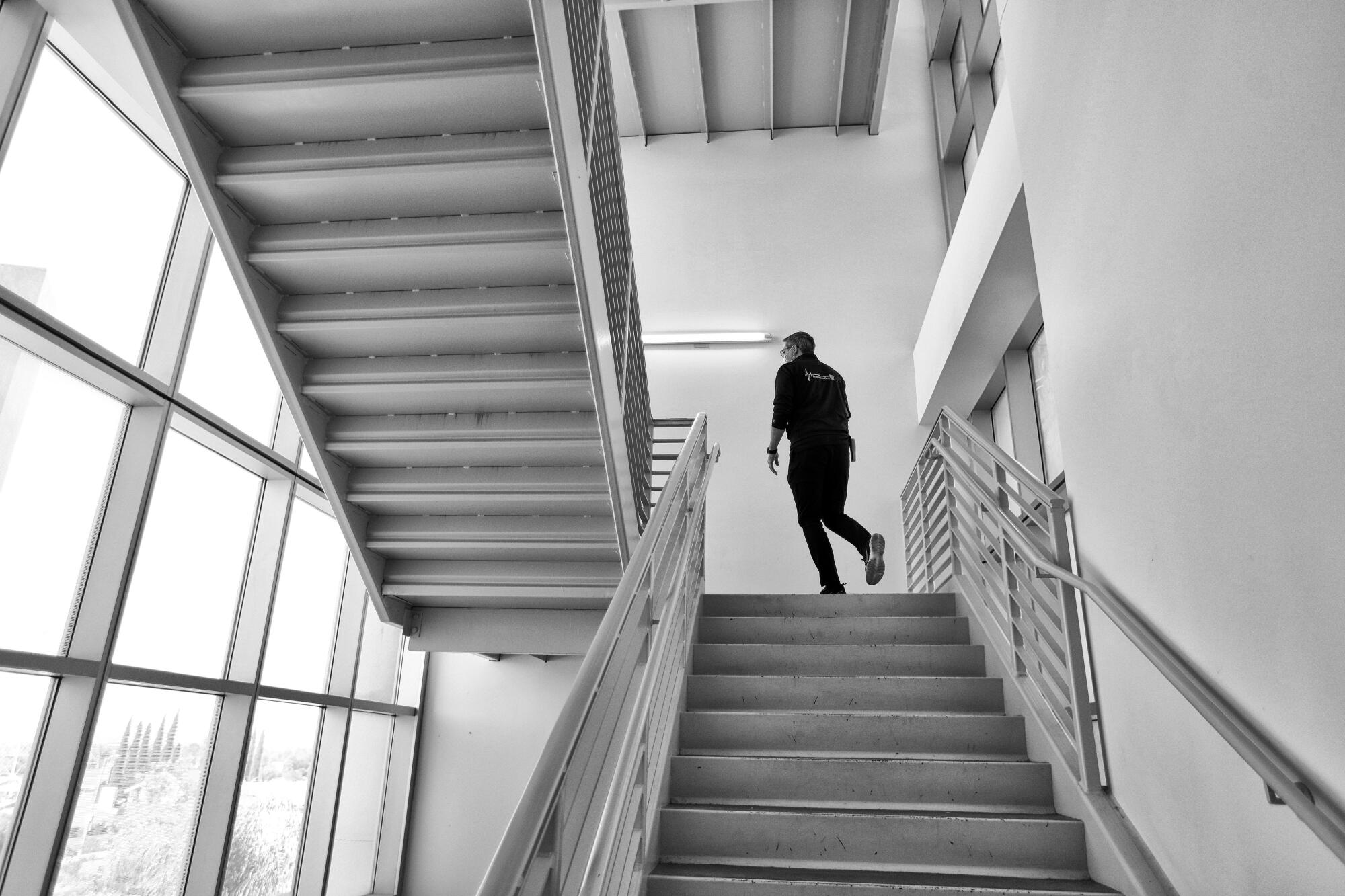
“As you walk through this door, you will see what I normally see today. My floor. This is very normal. Very typical.”
Staff members greet him with hugs and ask how he is doing. There is more noise than during some of the worst days of the pandemic. The sound of nurses talking mixes with the hum of medical equipment. Doors to patients’ rooms are open. There are no isolation gowns. No N95 masks are being worn in the hallways.

He compares this peaceful morning to the day in mid-March 2020 when Providence Holy Cross, located in Mission Hills, received its first COVID-19 patient. As he walked into his floor that day, a new sign warned staff they could not proceed without PPE. He stopped in his tracks. He didn’t know what to do.
Sure, he had used personal protective equipment a handful of times around flu or TB patients, but it wasn’t part of his typical routine. That would all change.
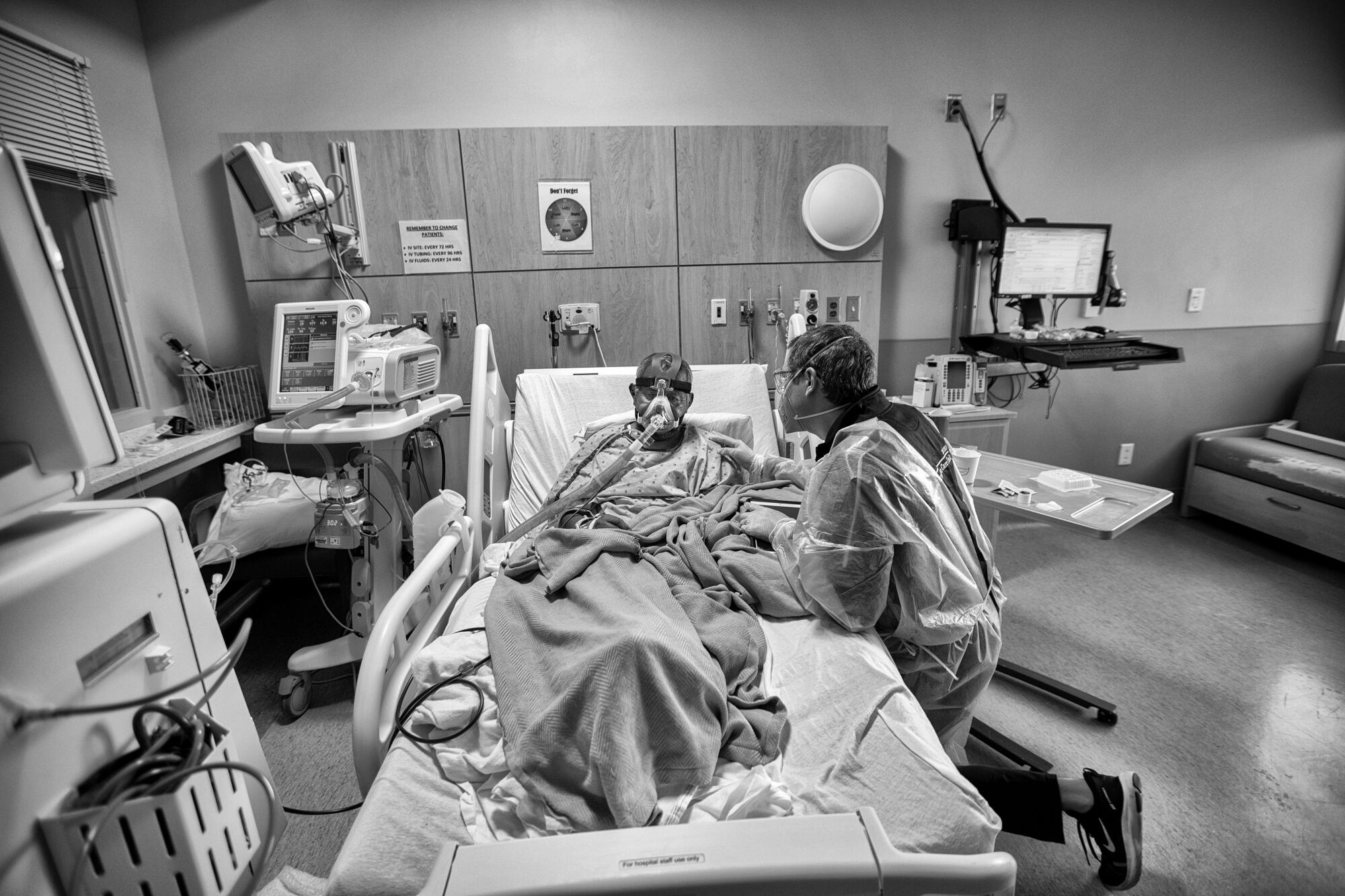
First patient
We stand outside the room that held the first COVID-19 patient. He recalls speaking with Dr. Marwa Kilani, medical director of palliative care, outside this room.
“Kilani was talking to me about the patient. He was dying, and the daughter was on the way,” he says.
He asked Kilani what they were going to do.
“Well, that’s the thing,” she replied. “We are not going to be allowed to let her in.”
The chaplain went down to the first floor, taking the stairs, to meet the patient’s daughter outside the lobby. He explained that no visitors were allowed inside, but that Kilani was waiting by her father’s room and wanted to talk with her via FaceTime. Using his cellphone, he called the doctor’s iPhone and she answered right away. He handed the daughter his phone.
Kilani asked if she wanted to see her father. Yes, she said. Kilani, standing at the entrance of the room, held up her phone so the daughter could see and talk with her dad.
Chaplain Kevin recounts what happened next: “She said: ‘I can’t be with you in person, but I see you. I love you. When you get to heaven, tell Mom I love you. I am going to be OK. You are going to be OK. Just rest. Just rest.’
“I was sitting next to his daughter and feeling so affected by her words,” Chaplain Kevin tells me. “I was feeling angry and confused about my role. I knew this was the best I could do, and we concluded the call.
“She handed me the phone back, and I thought she was possibly upset, but when we stood up, she hugged me, and she said, ‘Thank you for letting me be with my dad.’”
“It was tragic. It was beautiful. It was hard. It was all those things together.”
— Chaplain Kevin Deegan
Next, we find ourselves outside the room where Bob Harris died. “This is one of those sacred rooms,” Chaplain Kevin says. “It was one of the first times we were able to get family in during the pandemic.”
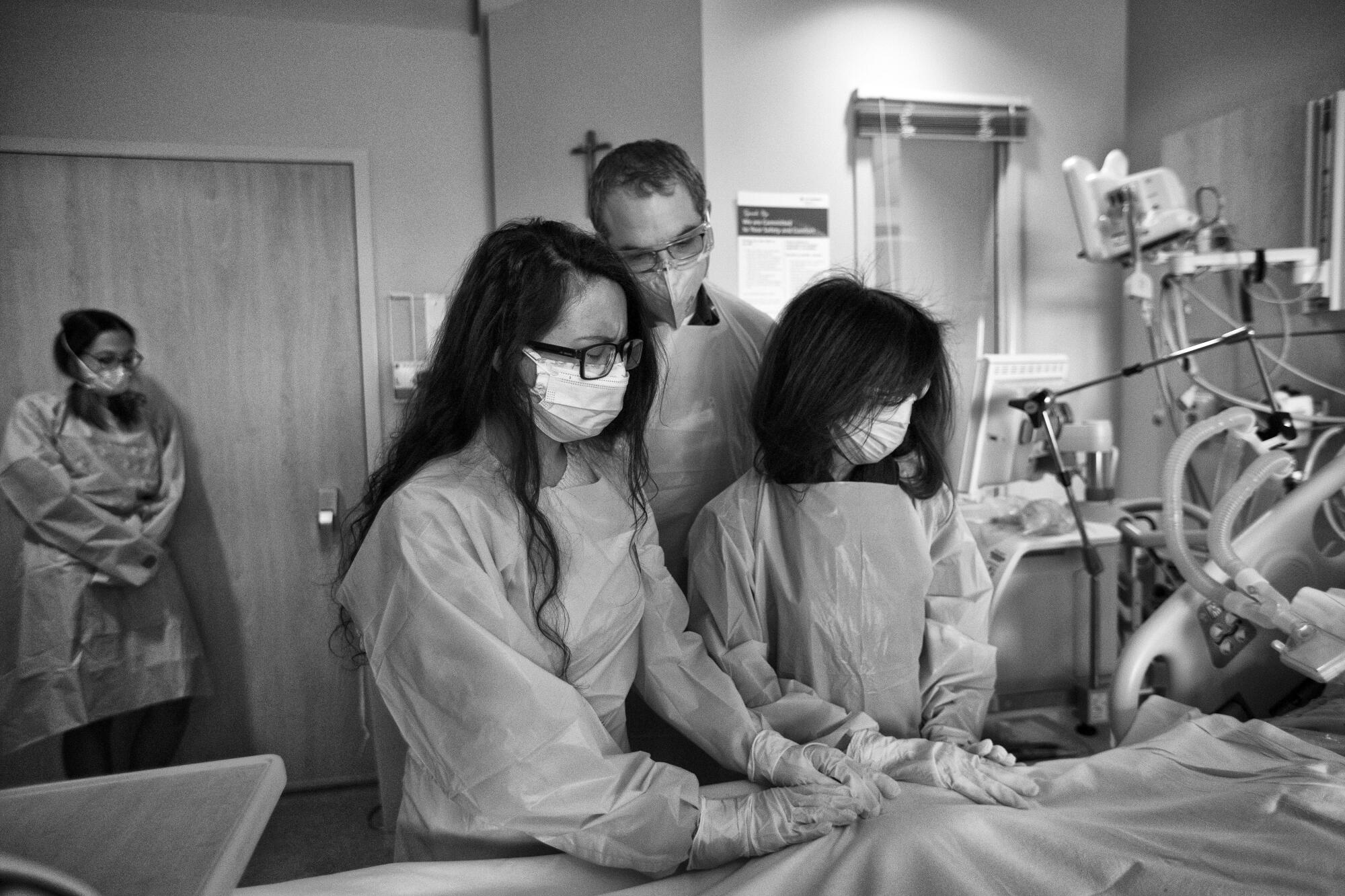
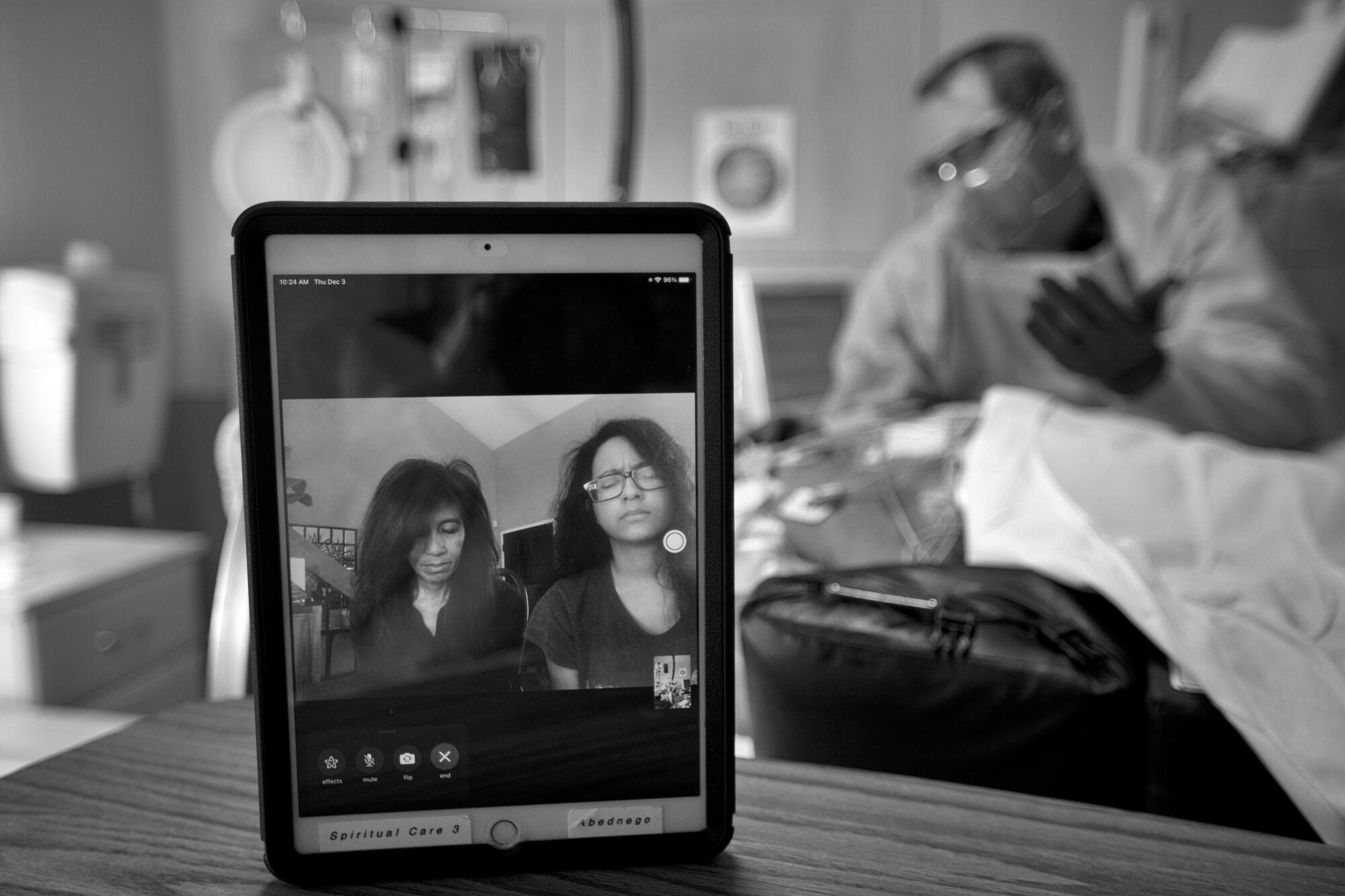
I remember this scene well. I was there. Nurses were standing outside the room crying as Kilani and Chaplain Kevin walked inside with Harris’ wife and two children. They had come to say goodbye.
The staff had gotten to know Harris and his family well because he had been their COVID-19 patient for more than 30 days.
“It was tragic. It was beautiful. It was hard,” Chaplain Kevin says. “It was all those things together.”
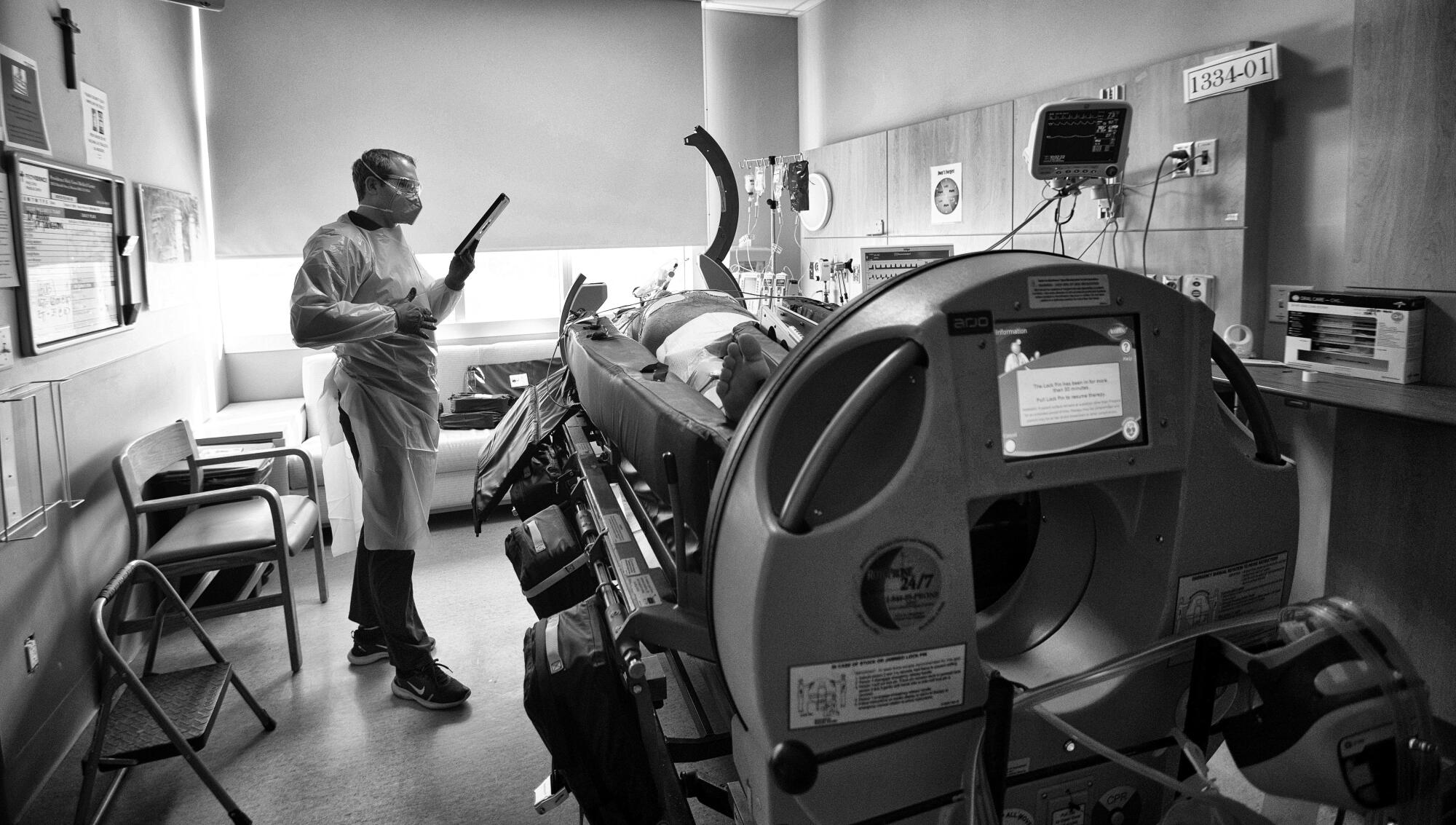
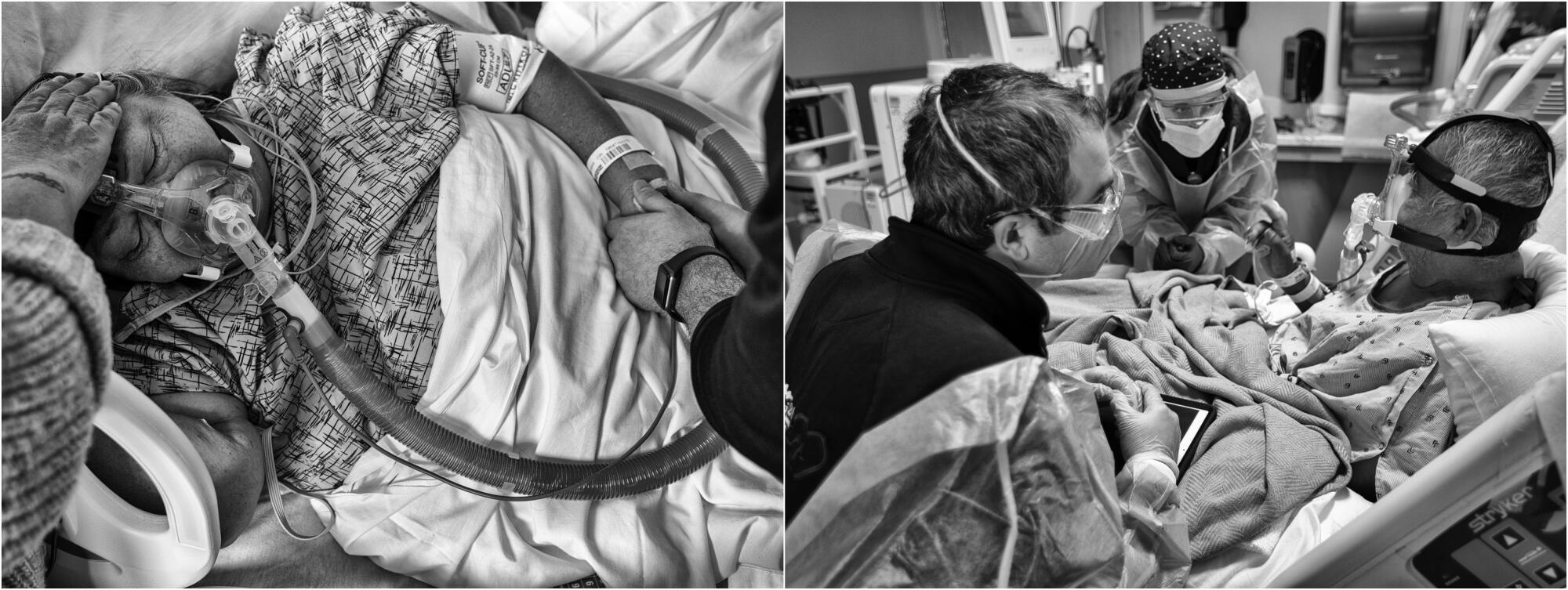
The taped lines on the floor have been removed, but the faint marks remain.
The strips of tape marked, in a way, how the coronavirus had upended life at the hospital. You could go past the tape only if you wore protective gear.
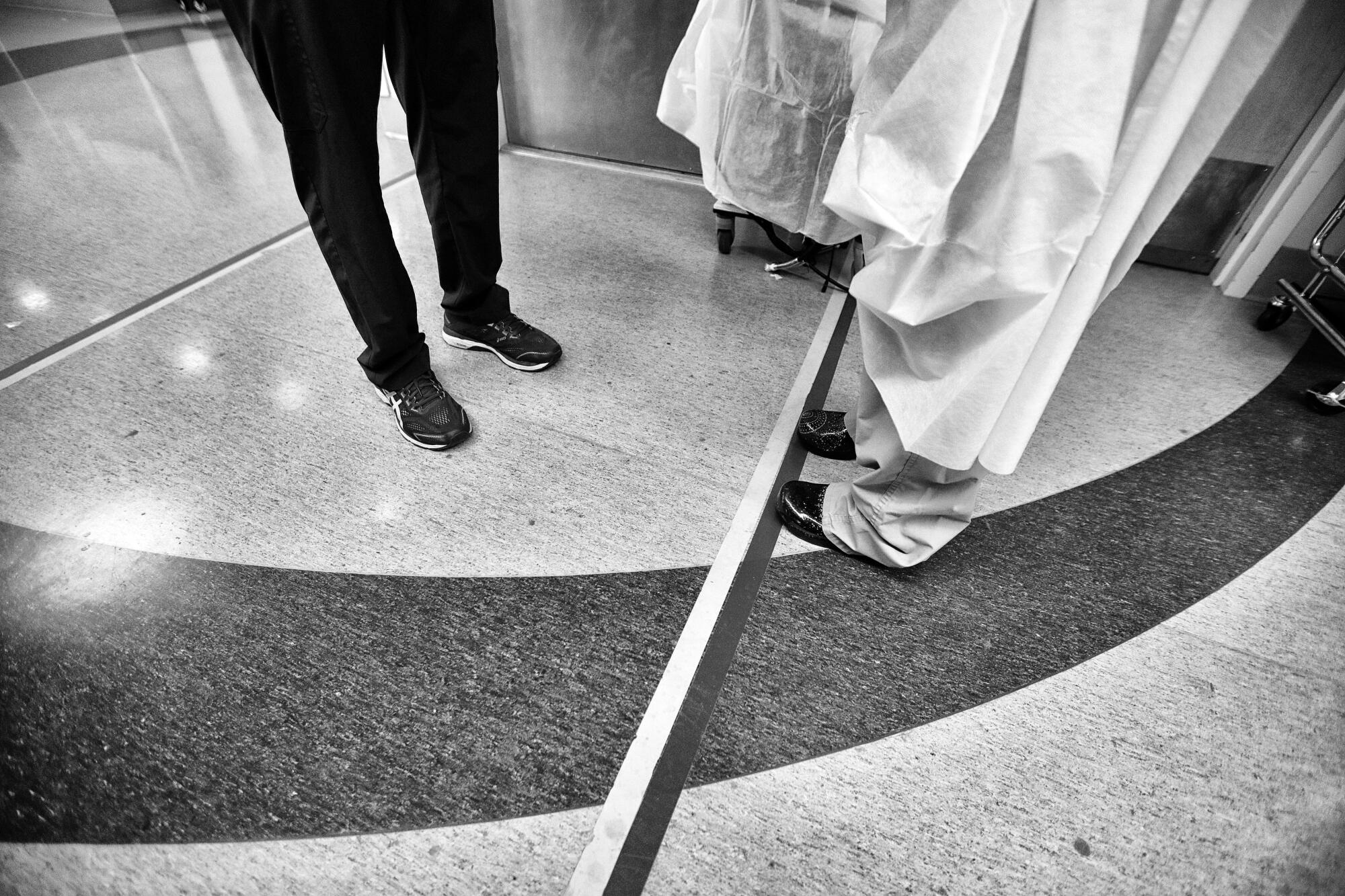
As the virus spread and the death toll rose, more and more portions of the hospital were marked off by the tape.
“It was almost like a tide,” Chaplain Kevin says of the moving tape. “The tide would come in and the tide would go out. It’s remarkable that a piece of tape was an indicator of how difficult work was going to be that day. Or how much we were being impacted by this virus.
“When the line was up the hallway, they could feel defeated as they arrived at work. And when it would recede, we would all feel good again. Something insignificant like a piece of tape would represent where they were.”
Before COVID-19 this floor was the “step down unit,” a step below ICU. It was the first COVID unit in the hospital but as the virus surged, more rooms were added. And then more floors, for more COVID patients.
“At the height of things, every single patient on this floor was COVID positive. And every room was filled too,” he says.
But on this morning, the mood was far different. The unit is busy, but with non-COVID patients.
“You can hear too how bustling it is,” he says. “This is not how it was.”
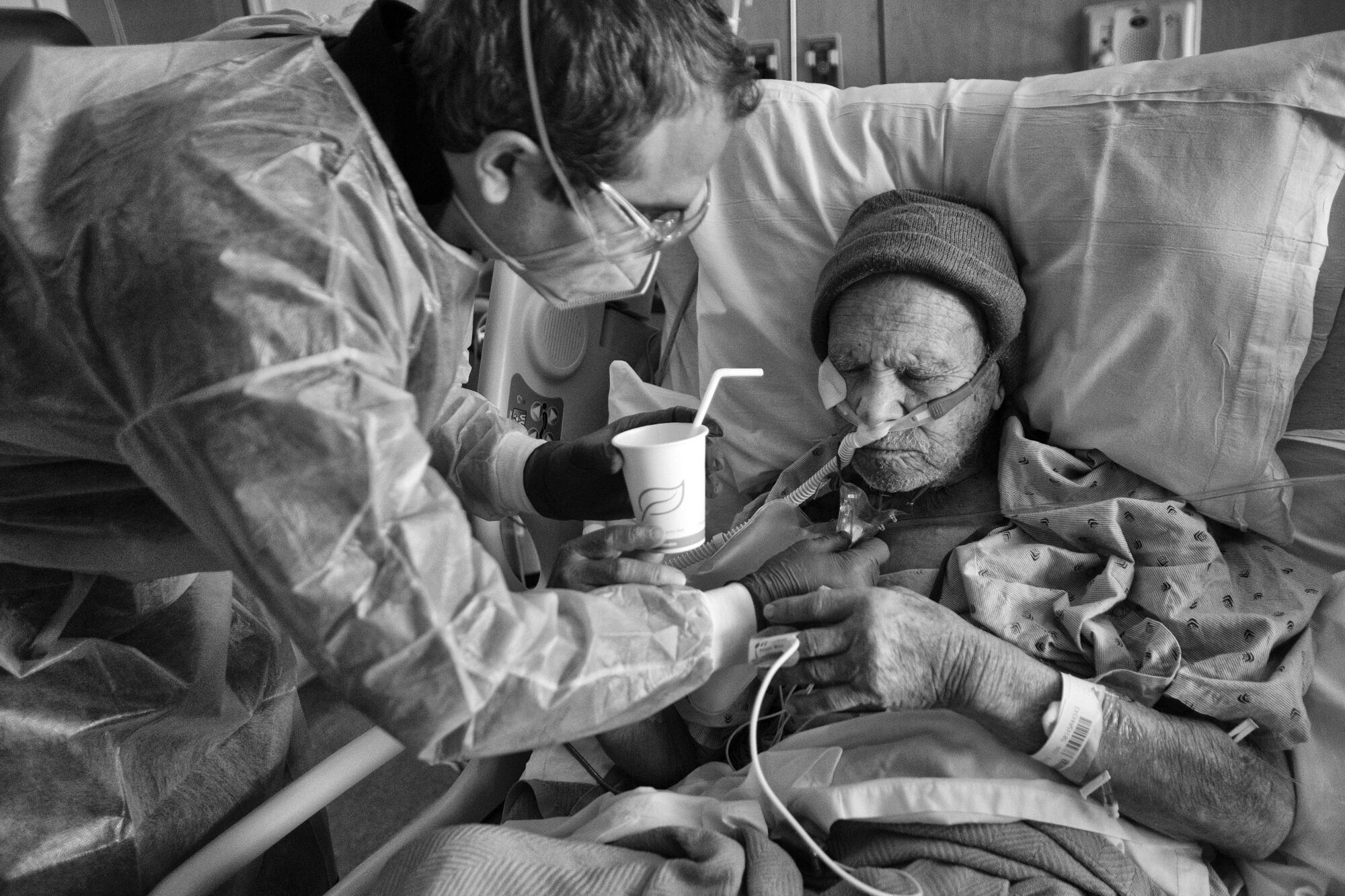
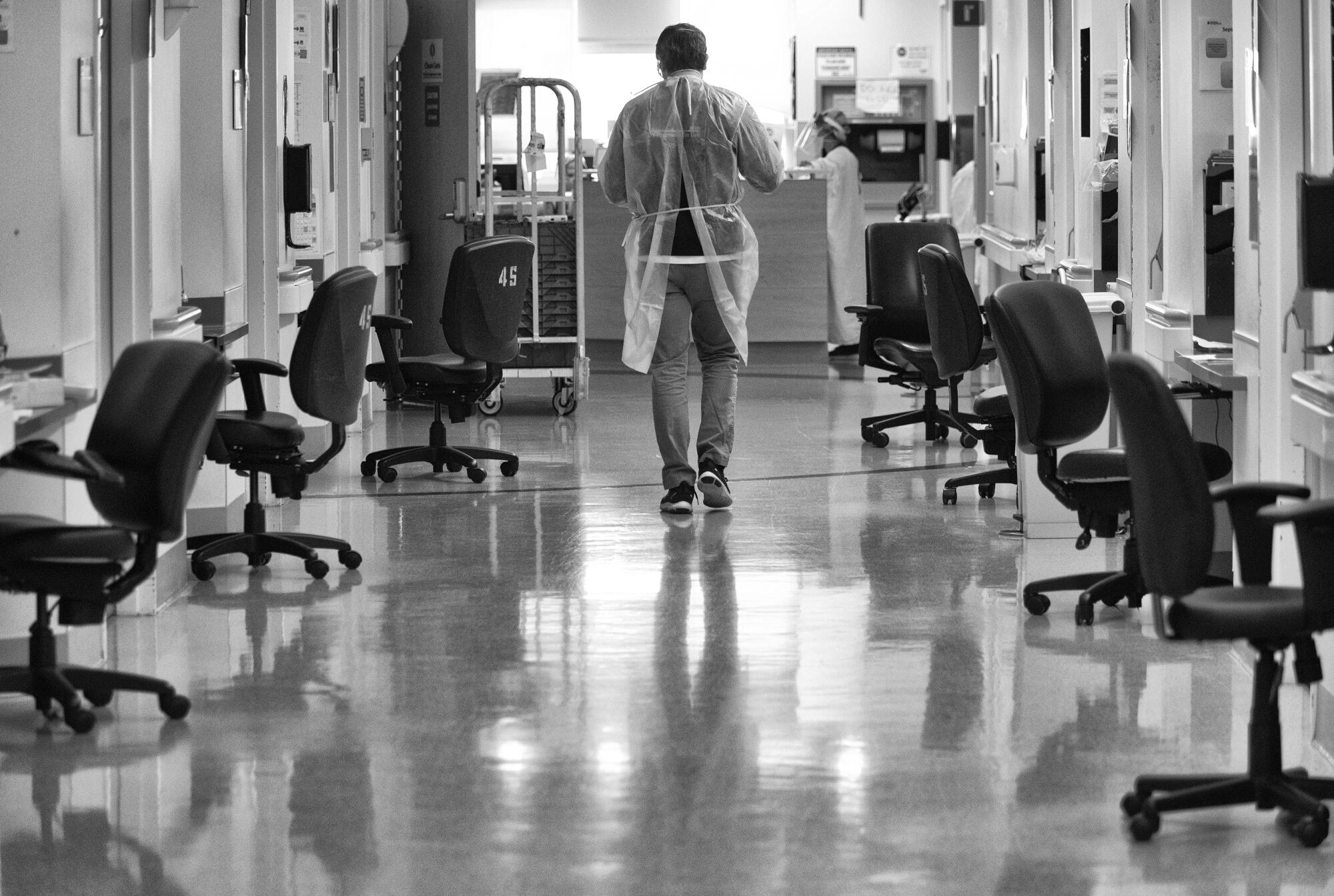
Kevin remembers the sound especially that first morning in the first week of COVID. “It was very disturbing because of how quiet it was. The silence was only pierced by muffled coughing.”
The cries of families
As we continue our walking tour, Chaplain Kevin recalls how, when the building was off-limits to visitors, people communicated with their sick relatives via iPads.
“Horrible. Just awful,” he says. “There were times within the first few months I was doing 10 video calls a day. There were sometimes I had multiple iPads going at the same time in different rooms. I’d have one iPad here, one iPad there, and I would be alternating back and forth.”
Hearing the voices of family members was the hardest part.
“A few months in, I learned to say to the family, ‘I am going to step away and give you some privacy.’ Part of that was giving them permission to say what they wanted without me being there to interfere, but part of it was for my own self-care.”
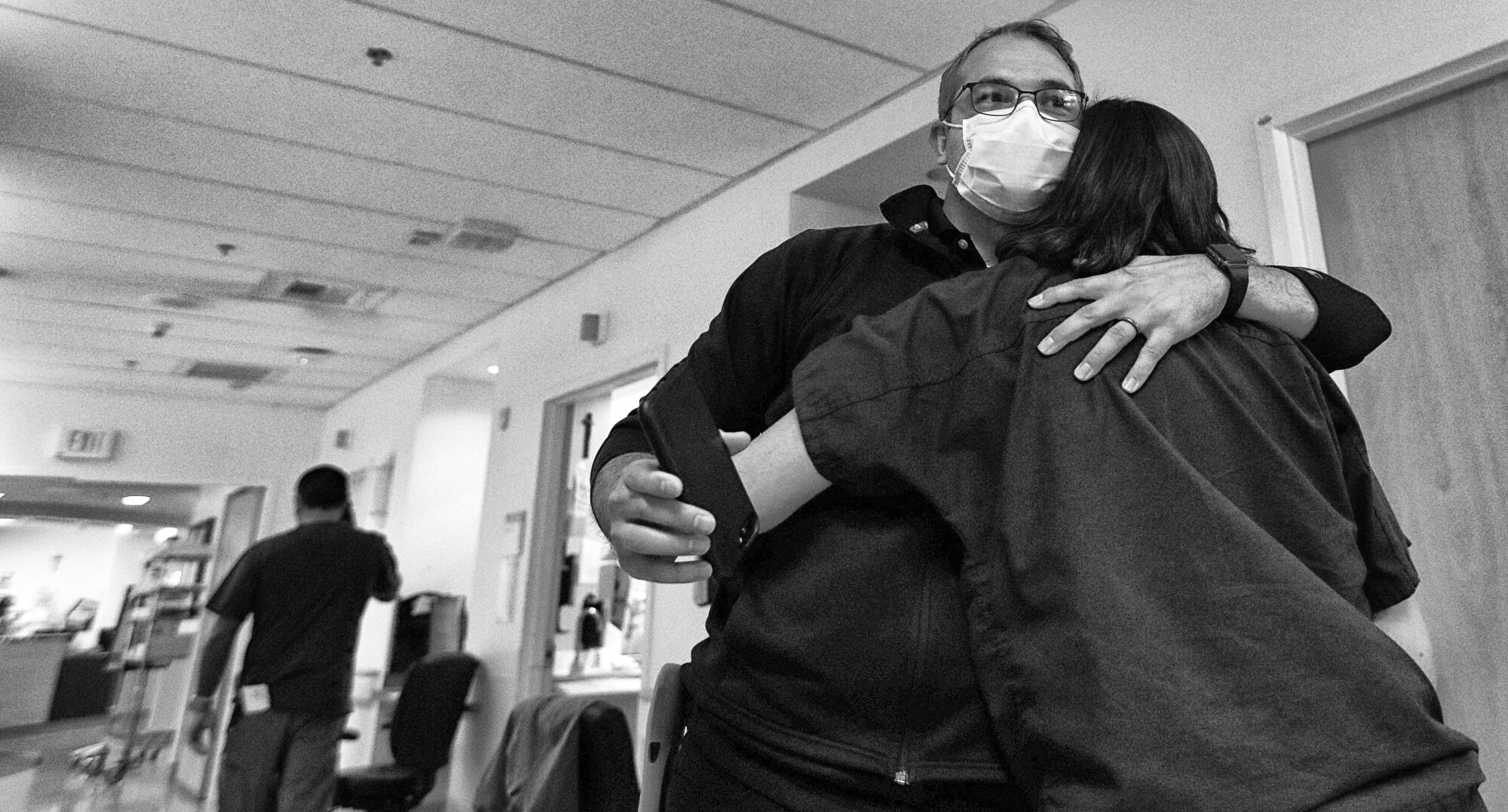
He adds, “I couldn’t tolerate the immense love, loss, and separation. That was the hardest part. Their voices are the thing that sticks with me.”
Ministry of being present
Chaplains, like photojournalists, must be present to do the work.
“We are a ministry of presence. We cannot offer support unless we are present. Support cannot be done after the fact. I had to be here while it happened. I had to be here with them so when they looked to me and said, ‘This is really hard,’ I can say I know because I have been here too.
“I had to be in person. I had to be with them. Donning and doffing PPE just like them. Witnessing patients in their worst of times. I had to be present. There is no other place for me but to be here. If I wasn’t going to be here, I wasn’t a chaplain because a chaplain is present.”
I understand this. I had to work in the hospitals because this was history. I had to be there.
He wishes, Chaplain Kevin says, he could have done more for the COVID patients, but then adds, “I don’t know what we could have done more for them. I know we didn’t fail them.”
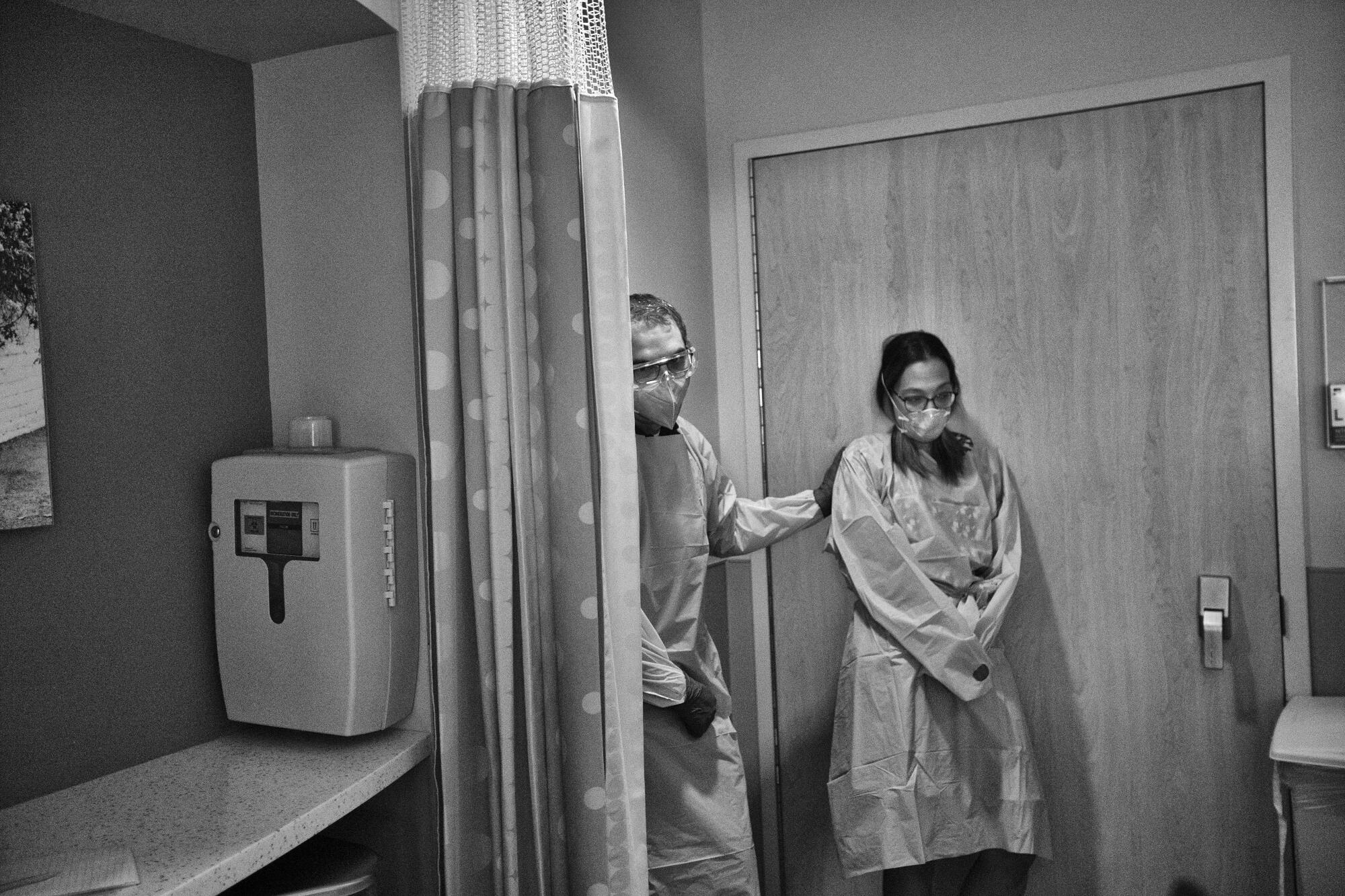
In recent days, health officials expressed concern that coronavirus infection rates are rising in California. Will conditions worsen with the arrival of Memorial Day, graduations, Father’s Day and summer barbecues?
For those who confronted COVID on the front lines, it’s hard to imagine.
“I don’t want to be reflecting on COVID with the surging numbers anymore. I don’t want to do that anymore,” Chaplain Kevin says. Then, resolutely, he adds, “But we’ll be here if that happens again. We are not going anywhere.”
The 1-million mark
On the day we toured the hospital, COVID deaths had already passed 990,000. The chaplain thought of the day it would reach 1 million.
“The number will be a milestone we will all recognize and have difficulty comprehending, but let us not lose sight of what that number represents,” Chaplain Kevin tells me. “How many millions of people were impacted, not just the million who had died. The ripple effects are incomprehensible.
“The only way I know how to make sense of the experience is to walk around with you and to point and to stand and to stop. And to enter the rooms and to remember.”
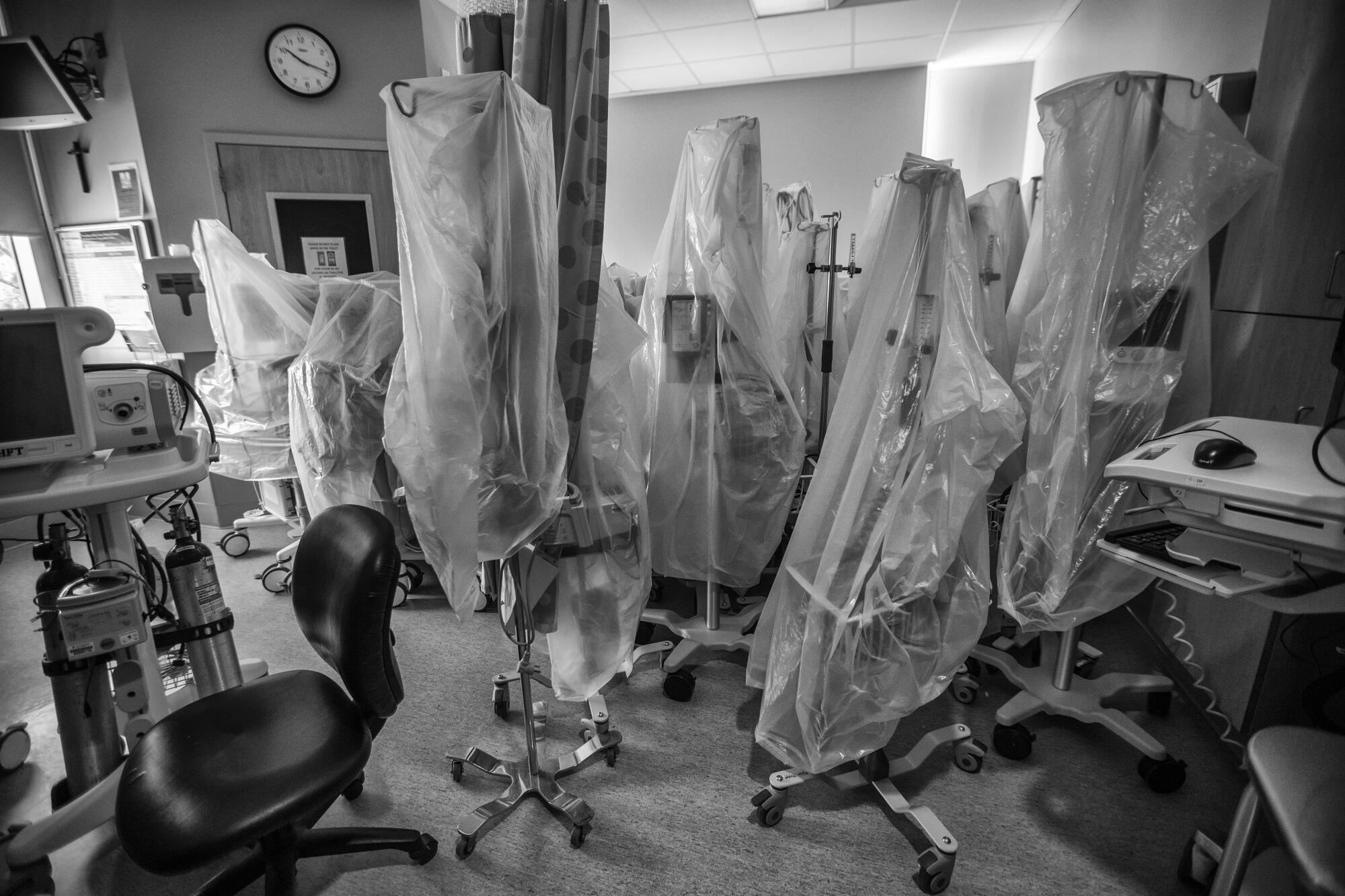
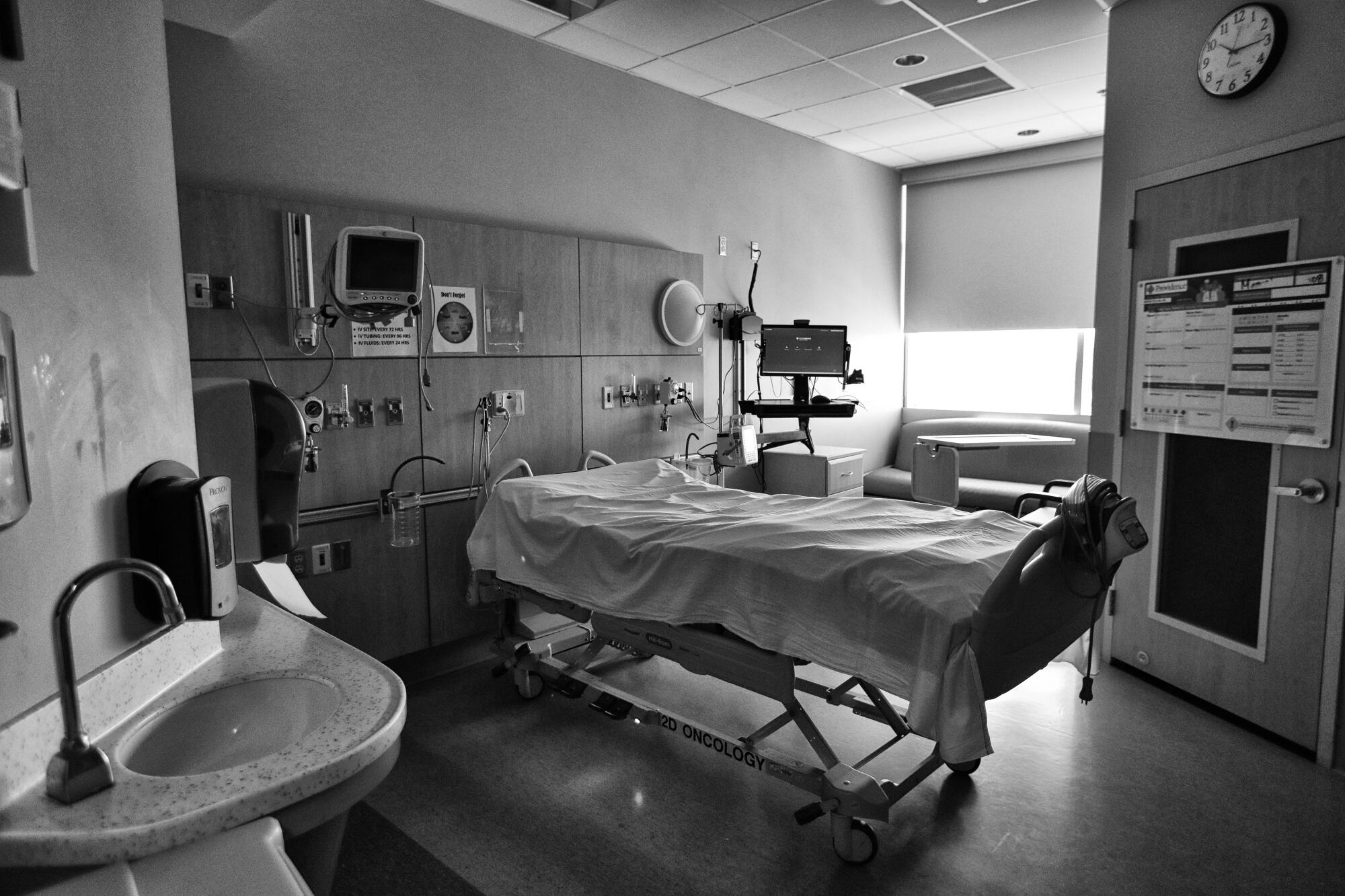
We come to the room where I had first met Chaplain Kevin and Dr. Kilani in 2020. But today, there are no patients. It now serves as a storage room for medical equipment — ventilators and IV stands, all covered with translucent white plastic.
“You can feel that something sacred happened here,” Chaplain Kevin says. “It’s almost like when you walk into like an old cathedral, very eerie, but also very special that you know that you’re walking into hallowed ground.
“That’s what this room feels like — that you know that this ground that you’re standing on is holy and the holiness, the presence of God, but also all of those that have gathered here to do a sacred work.
“Yeah, it’s like an empty cathedral, and as it relates to COVID, I say that’s the kind of ground I want to be walking on. Sacred ground.”
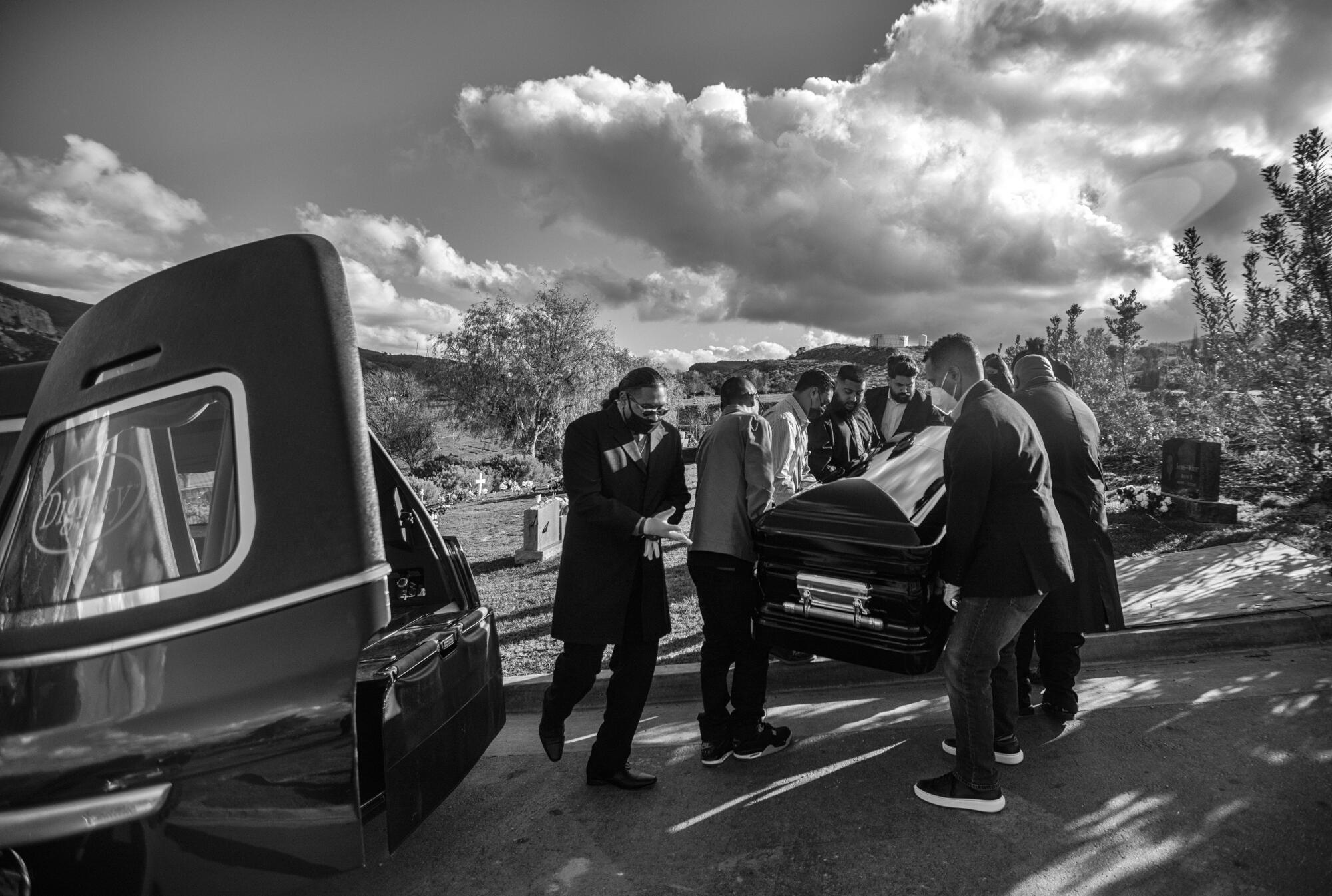
- Share via
Watch L.A. Times Today at 7 p.m. on Spectrum News 1 on Channel 1 or live stream on the Spectrum News App. Palos Verdes Peninsula and Orange County viewers can watch on Cox Systems on channel 99.
More to Read
Sign up for Essential California
The most important California stories and recommendations in your inbox every morning.
You may occasionally receive promotional content from the Los Angeles Times.
